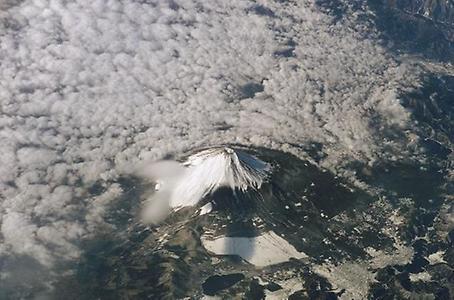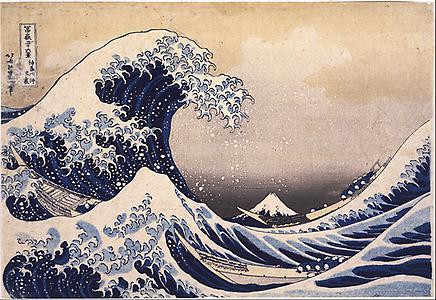Mt. Fuji#
by Junichii Azuma, Professor at Kobe Gakuin University, Global Communication Faculty
Mt.Fuji on the island of Honshu as seen form space Shuttle. Image courtesy of NASA
If not for the elevation, what makes this mountain renowned even outside of Japan?

In public domain
The reason this mountain had inspired countless Japanese artists back from the ancient times is, of course, its exceptional beauty. This can be explained by Mt. Fuji’s unique geological character. Though most of high peaks of the world are part of a mountain range, Fuji is an independent peak. It draws a beautiful curve from the summit to the foot.
Seeing this majestic mountain, people connected divinity to it. Back in Edo-era, it is said that thousands of people went on a pilgrimage there.
The fact that Mt. Fuji was registered not as “natural” but as “cultural” world heritage site explains its significance in Japanese culture. Recently it has become a popular destination for hikers, and about 300,000 people are said to hit the trail in the summer season alone. Those who make it to the top are rewarded with a spectacular view from the highest point in Japan.
Whether you see Mt. Fuji in a form of art or with your own eyes, its beauty will always attract you.